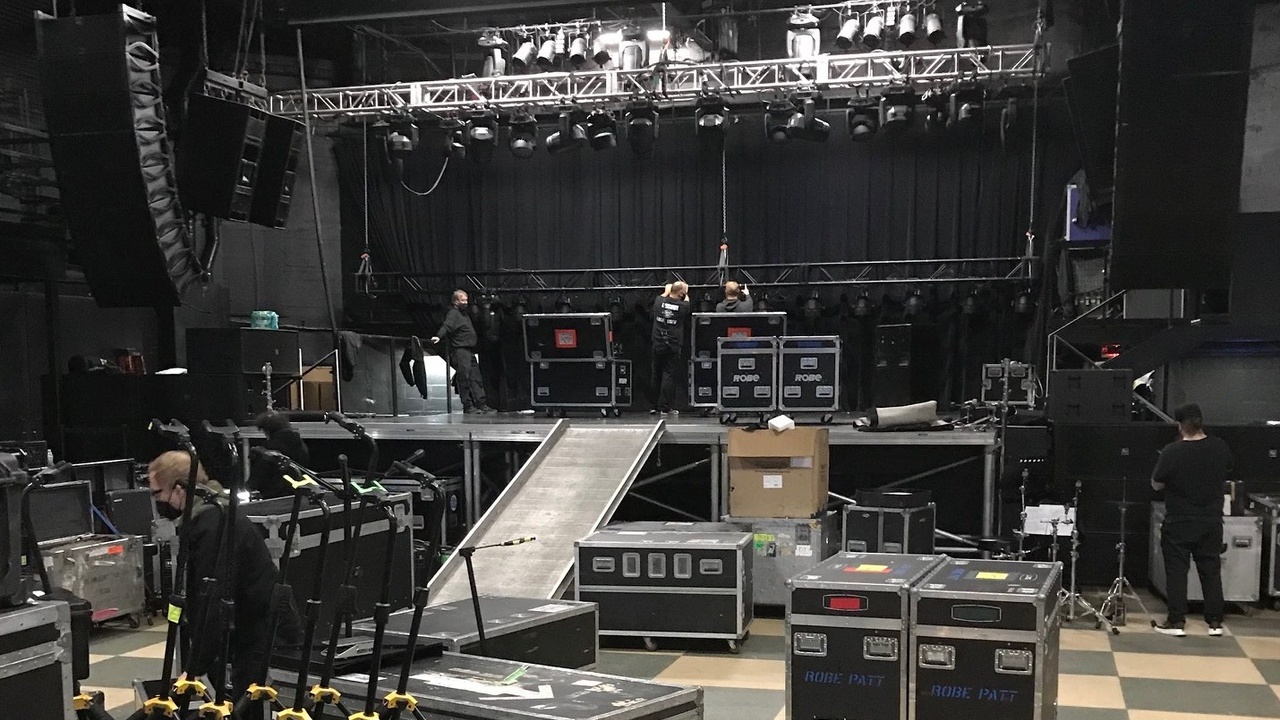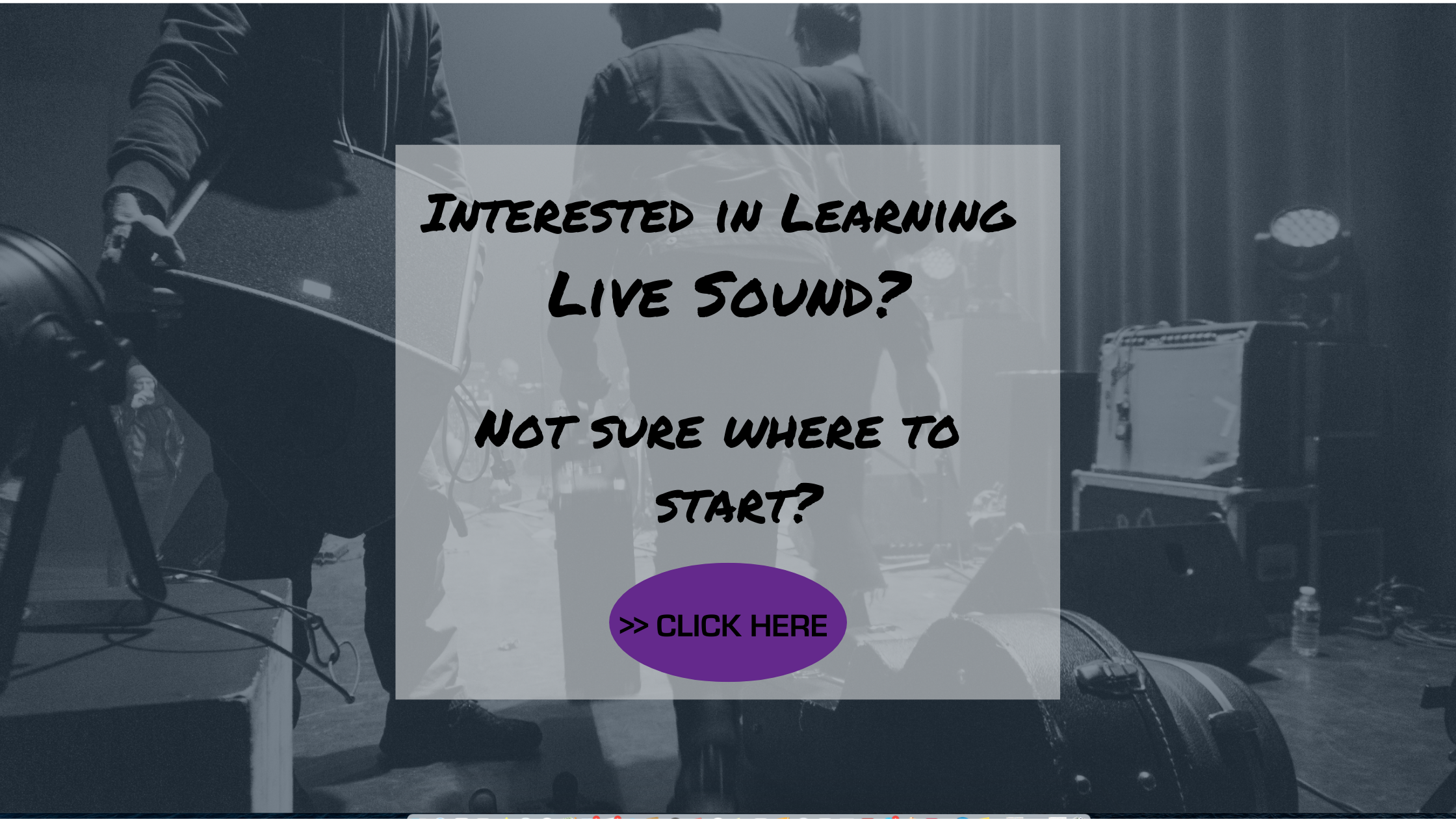Getting started in live sound? Here's what you need to know.
Mar 24, 2022
Summer touring season is quickly approaching and after an extended and very much unexpected shutdown of the live music industry due to the pandemic, the floodgates are about to open. Hundreds of artists have announced tours and are preparing to go on the road. Indie artists and local bands have already been hard at work trying to make up for lost time.
This presents a wonderful opportunity for aspiring sound engineers and students graduating from technical schools with an audio/sound reinforcement background.
I recently spent a week speaking with some amazing and inspiring students at one of these schools, many of them eager to get on a tour. Along with asking what my favorite PA is, favorite mixing console, and what plug-ins I use, I am also often asked what advice would I give to aspiring sound engineers.
While equipment preferences are very subjective and often relative to the artist's needs, here are a few things that I can share that would be much more helpful when you are getting started mixing live sound.
Great sound starts with great musicians and great sounding gear.
If you’ve ever heard the saying ‘Garbage in Garbage out’ it couldn’t be more accurate in this situation. When it comes to building a great mix, you need good bones. The musicians and their instruments are the bones. If the band doesn’t play well or their gear sounds bad there is only so much you can do. Talent and practice go a long way. The more rehearsed and capable the band is, the easier they will be to mix.
It’s also important that the equipment is in good condition and free of problems. Start with a great guitar tone at the amp, use drum heads that are in good condition, and make sure everything is well-tuned.
Spend time with keyboard players going through all of their sounds and patches to make sure the levels are consistent.
Work with the programmer to make sure any tracks being used have consistent levels and EQ as well.
Mixing keyboards and playback tracks live.
Little things like using the proper string gauge on stringed instruments, fresh batteries in pickups and pedals, and replacing or repairing cables that are not working, noisy, or intermittent, can all make a difference.
When you have great sounds from the source you shouldn’t need to do much more than mic it and do some minimal EQ.
Use the right tool for the job.
Once you’ve got everything on stage sounding great, choose the right microphone.
Consider what you are trying to achieve and the characteristics of the microphones available. Is there a lot of stage volume? Is the stage dead quiet? Does the singer have good mic technique?
Do you need to add a little color to the guitar tone to beef it up a bit? Do you want it to be completely transparent? Does the Sax player run around and need a wireless mic clipped on his sax?
To capture the bass frequencies of the kick drum, you’ll want a mic with a good low-end response. For a beautiful sounding acoustic guitar, a quality condenser mic will help you bring out the details.
An omnidirectional microphone may not be the best choice for use on a podium that is placed very close to the speakers. A cardioid microphone might be a better option.
When you get to the point of being able to specify your console and PA of choice, choose wisely. Consider the needs of the show and your workflow. Consoles and PAs vary widely in their sonic quality and characteristics. Choose a console that will meet both your workflow and audio needs and a PA that will work for you rather than against you.
There will be times when compromise needs to be made but that’s a topic for another article.
Keep the big picture in mind.
We are all on the same team here, audio, lighting, video, band, and crew. The goal is for everyone to have a great show and a great day.
Be flexible and consider the other departments when you are building your world. We’ve all got to share space, the lighting crew is not putting their lights where they are just to annoy you. Someone much higher up in the food chain makes those decisions. The monitor engineer will need a clear line of sight to the band. Don’t move other people’s cases without asking them.
Be on time and consider how your actions affect those around you. While your day may begin at 11 am, much of the crew has already been working for hours. You might enjoy taking your old sweet time at load out but everyone else is waiting for you to get out of their way so they can get a few hours of sleep before doing it all again the next day. Save your socializing with friends or fans for after your gear is in the truck, not while the lighting crew is waiting to bring the truss in over your equipment.
Keep things neat and tidy. Be conscious of how you run your cables so as not to entangle them with other departments or create a trip hazard for the artist.
Pay attention during the show.
You need to be alert to what’s going on on the stage, especially if you have an artist who does not perform the same exact set every night or who likes to throw a few surprises in here and there.
Unexpected instrument changes or guest musicians are less likely to throw you if you are focused on the stage and not staring at a computer screen or chatting with guests at FOH.
This is especially important if you are working with an artist or band for the first time and are unfamiliar with their show.
If you must have it to do your show, bring it with you!
If there is a piece of gear that you absolutely cannot do the show without, you need to bring it with you. If your artist must have a specific reverb, plug-in, microphone, or any other piece of gear, it needs to be part of your touring package.
This is especially crucial if you are doing fly dates, using local production, one-offs, or any gig where you are relying on someone else to provide the audio equipment. It doesn’t matter how many times you go over your rider or tech spec, and how many assurances you get that ‘yes we will provide it’, this is the real world and we don’t always get exactly what has been promised.
So if your singer absolutely cannot sing out of anything other than the Sennheiser e945, bring it with you. If your band absolutely requires the Waves Horizon bundle, bring a flash drive with the licenses, or better yet a computer with it installed and activated.
It doesn’t matter how many times you advance your audio needs with the local production contact, or how much you stress how crucial this piece is to your show, the way information filters down or doesn’t filter down to the people actually showing up with the gear is beyond your control and more often than not, things fall through the cracks. It will save you a lot of time and headaches if you make sure that you travel with anything that you absolutely cannot do without.
Less is more.
The fewer things in the signal path, the fewer things to cause problems. If you’ve got 4 or 5 things inserted on an input, whether plug-ins or outboard gear, there are many places for problems to arise, not to mention noise or signal degradation.
If and when you do have a problem it will also take that much longer to track it down. I’ve seen sound engineers spending far too much time frantically chasing down problems with an input because the signal chain is layers deep in plug-ins.
If you need more than 1 or 2 things inserted on any one input either you are not using the right tool for the job or the problem is with your source- see above.
Speaking of problems, having a solid understanding of signal flow is crucial in troubleshooting efficiently.
Be flexible and learn to adapt.
Being able to handle whatever gets thrown at you will get you a lot further than throwing a tantrum. The crew person who can easily adapt and roll with it is much more hirable than someone with a ‘can’t do it’ attitude.
Finally, mix with your ears, not your eyes.
I can’t stress this enough. If it sounds good, leave it alone, and don’t keep tweaking it because you don’t like the way it looks on the computer screen. Learn how to train and trust your ears, they are the best tool you have and they will be with you everywhere you are.
It’s very easy to get caught up in the technology and start relying on a computer to tell you how things sound.
Mixing with your ears allows you to really enjoy your craft. We’re audio people, sound people, it’s about how it sounds. If we wanted to worry about how it looked we’d be doing lighting!
These are just a few of the things I’ve learned over the years, hopefully, you can apply some of these ideas and find that they make your job a little easier.
By: Michelle Sabolchick
Are you getting started in Live Sound and not sure what you need to know? Check out '7 Things Every Live Sound Engineer Should Know'





